Editor Talks / Volume
editor talks | paula v. álvarez
Volume magazine was founded in 1995 by Archis Publishers, Columbia University’s C-Lab and OMA’s research Think Tank AMO, somehow receiving the baton of former Dutch magazine Archis. Since its launching and through 41 inspiring issues, Volume has proved to be one of the more influential and active architecture publications, mapping emergent architecture scenarios, anticipating new territories for discussion and architectural speculation, and exploring new concerns along with new tools and modes of practice. Vibok Works had the pleasure to talk with editor in chief Arjen Oosterman and managing editor Brendan Cormier (coinciding with his departure to work as curator for the Victoria & Albert Museum) about Volume’s main editorial coordinates and the process of editing. Among other subjects, they told us about Volume’s ‘editorial vulnerability’, its ‘making by doing’ philosophy, why to ‘move away from reviewing’, the risk of focusing on ‘form as content’ and ‘Internet weirdness’ as a source of inspiration. We hope you enjoy the conversation as much as we did!
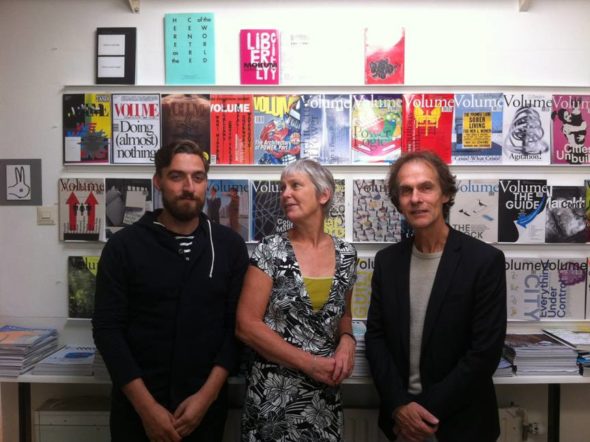 Volume crew 2014, from right to left: Arjen Oosterman, Editor in Chief; Lilet Breddels, Director of the Archis Foundation; and Brendan Cormier, Managing Editor.
Volume crew 2014, from right to left: Arjen Oosterman, Editor in Chief; Lilet Breddels, Director of the Archis Foundation; and Brendan Cormier, Managing Editor.
PAULA V. ÁLVAREZ: Volume has experienced an interesting evolution in the last years, becoming more dense and thorough, somehow closer to a journal —but still a magazine. I feel Volume’s layered edition is key to distance itself from the drive of regular scholarly publications. The edition exhausts the topics but not the “audience”: different readers would get different versions of a single issue of Volume, by picking up contents and making their own package. On the other hand, it kind of breaks the “fourth wall”, like if you editors were looking at us through the pages to make us aware that we are into a construct, thus, we are invited in. What are Volume’s main contributions to the architectural publications scene? I’m also curious about what kind of publication you’re seeking to bring to the public and what audience you seek to engage.
ARJEN OOSTERMAN: It’s maybe good to indicate where Volume issues come from. Curiosity is the driver. Every issue is an attempt to understand a little more of the world we live in, with a focus on architecture. We cannot do that on our own. Each issue is the result of collaboration; each author feeds the subject, adds an angle (which can be opposed to the original brief and idea) and if the reader feels thereby invited to participate, great. Volume isn’t selling a message (this is the way to go, or this is how it should be); it is asking attention though, to consider or rethink specific themes and dimensions, with the hope that spatial intelligence is used to better effect. So, Volume cannot solely focus on architects, it has to address a wider audience of players and stakeholders in the field of space making. Social space, being real or virtual, is central to this concern. Although we understand architecture as play, we consider it as very serious—maybe too serious sometimes.
BRENDAN CORMIER: I think Volume gears itself towards readers who have a particular aversion to clichés and tropes in architectural discourse and who are seeking new ways to interpret the world. The first issues I read of Volume, which made me think Volume was something special, were V14 “Unsolicited Architecture”, V17 “Content Management” and V18 “After Zero”. The value of these issues is that the editorial put forward a hunch, and then tested it out through the contributions of individual authors. More importantly each of those hunches offered a dramatically new way to look at architecture. What’s interesting is that these hunches were put forward without fear of being contradicted by the authors. The slogan of Volume is ‘to beyond or not to be’, and there is something fundamentally unserious about going beyond. It’s like looking at a lot of speculative architecture drawings from the past. Of course we know today that these images of constructions and apparatuses are physically impossible to realize, but they had to be put to paper to move the conversation forward. This editorial vulnerability is what makes us different from more academic journals, which are obliged to have a posture of correctness.
I would say, Volume’s place in the magazine landscape is to constantly question the narratives being produced in the profession. In terms of breaking the fourth wall, we operate from a position that is close to the reader. We are not trying to authoritatively explain anything. We are just as confused as the reader is and solicit contributions to help us unravel tricky topics.
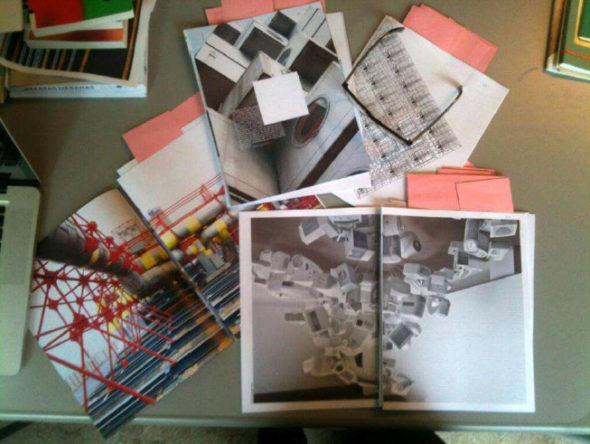 Blueprints for Volume 37 “Is This Not a Pipe?”
Blueprints for Volume 37 “Is This Not a Pipe?”
P.V.A.: How do you decide the topics of Volume? Do you make a plan for the editorial course of a year of Volume, or do you build it on the go? Which part is the most rewarding and which one the hardest?
A.O.: There is an idea about architecture that considers ‘making by doing’ as the core of and the key to design. Volume works very much like that. The initial ideas get shape and are sometimes tossed around in the process of making. It is not a conceptual line, that only needs filling in. Since collaboration is key, setting themes well in advance is only a way to get going. In the end the order gets reversed, themes don’t make it, others are introduced in a late instance. That being said, Volume can also be persistent in taking themes on. The Architecture of Peace project started in 2010, coming from events that started in 2004, and will continue in the next years. The two dedicated Volume issues (V26 and V40) are part of a larger program including exhibitions, conferences, workshops, on the ground research and more. At some point it is useful to make a Volume out of this material, at another to create an event or exhibition. So, there are internal and external drivers of the programming of Volume.
The last ten issues or more, Volume has been mapping various forces that shape architecture and that architecture relates to. Sometimes Volume is part of a larger program, sometimes program is generated by an issue as follow up. And although a year is not a very relevant notion for a quarterly (“what shall we do in 2015”), Volume looks some four issues ahead. And if I say Volume, I mean the three participating entities mentioned on the cover. Overseeing the whole Volume series, sometimes C-Lab/New York takes the lead, sometimes AMO/Rotterdam takes the lead, and often Archis/Amsterdam takes the lead. Each editorial group has its own preoccupations, its own culture of making, and that translates into the Volume series. Never a dull moment.
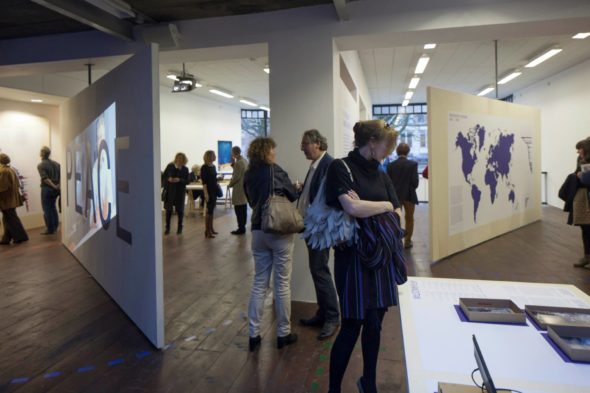 The Good Cause exhibition at Stroom Dem Haag. Photo courtesy of Denis Guzzo.
The Good Cause exhibition at Stroom Dem Haag. Photo courtesy of Denis Guzzo.
P.V.A.: Still on the theme of making Volume, I’m very intrigued about something Brendan pointed in his detailed post about the process of making an issue: that the final result looks vastly different than what was first conceived. Could you tell us more about this?
B.C.: I think this goes back to the fact that we begin by constructing an editorial hunch that we then put forward to contributors to respond to. When we are writing the hunch, we discuss internally what the magazine could look like and what kind of material we should look for, so we already begin constructing an image of the issue. That image however evolves once we start conversing with potential collaborators and receive their pitches, and it evolves again when we receive their actual material. Throughout the process we are constantly trying to recalibrate the image of the final product –as well as our understanding of the topic– so that we can make the necessary adjustments to make something relatively complete. Usually, at the midway point, it becomes clear that one kind of contribution or another would be absolutely vital, so we race to try and fill in those gaps.
P.V.A.: Volume’s premise was going beyond architecture’s definition of ‘making buildings’. According to your editorial statement, this is a way of reaching out for global views on designing environments, advocating broader attitudes to social structures, and reclaiming the cultural and political significance of architecture. How has this statement evolved along this decade? I mean, architectural practice has intensively diversified and broadened. Is this is what you had in mind when you pointed out that “yesterday counter-culture is today accepted practice” in the editorial of Volume 36 “Ways to be critical”?
A.O.: The Volume project came from different backgrounds. One was a concern for its relevance in a time when novelty for novelty’s sake seemed the bottom-line. New input on what architecture could do and bring and deal with and influence seemed really needed. Another was the experience as architecture magazine (Archis) to gradually lose its critical position, not because it wasn’t critical and investigative in its attitude anymore, but because the context had changed, submitting architecture magazines to pr strategies of architecture firms and making it ever more difficult to do truly independent criticism. On the one hand, architecture firms got a firmer grip on what was being published, on the other hand the image became the dominant message (as long as you’re seen, it is good publicity). Archis and later Volume tried to escape that condition by moving away from reviewing. There’s also the observation that there is a lot of reviewing (ever more with social networks nowadays) around and that a magazine like Volume should address other dimensions of architecture at large. But you’re hitting a sweat spot, in the sense that the ‘Critical’ issue came from the observation that we never look back on what all this alternative ways to practice architecture actually produces. That issue became an illustration of your earlier question about shifting themes and thematic within an issue during the process of production. Volume 36 started like indicated above, but in the act of making we got occupied by this ‘ways to be critical’ so the review issue is still to come. It probably won’t be in the form of a review section, added to each issue, because then Volume is being pushed back into this logic of filling a certain number of pages with a certain kind of content, that is often driving magazine makers from day to day.
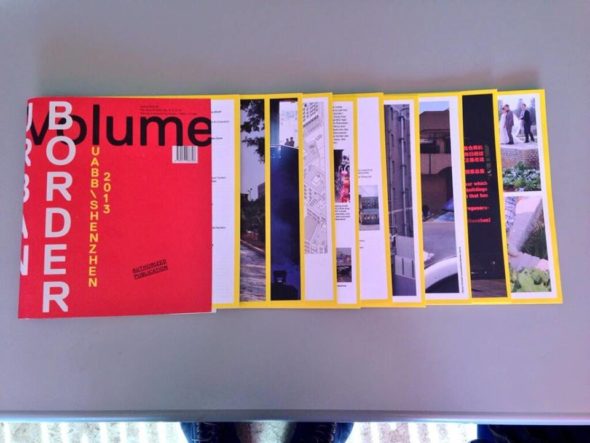 Unbound version of Volume 39. “Urban Border”
Unbound version of Volume 39. “Urban Border”
P.V.A.: I personally find very refreshing when a building is discussed in the pages of a magazine like Volume, and there is always one at least, maybe because most of the chosen topics resist so well being performed by buildings. On the other hand, some of the fresher and more in-depth views on the current state of architecture are reclaiming a broader approach to its traditional agencies. Take Lukasz Stanek’s inquiry about restricting architectural discourse to ‘buildings’, ‘streets’, ‘squares’, ‘parks’, ‘landscapes’ etc., since they cannot be understood as reified typologies anymore. Or the seminar “The Building” organized by José Aragüez in the AA and now at Columbia GASPP with Aaron White, that invites to discuss the building, the architectural object par excellence, as an ultimate realm of research. Would an issue of Volume dedicated to the making of buildings be such an insane idea?
A.O.: Although in some countries and regions architecture as practiced has moved closer to some ‘beyond’ positions, Volume has indicated before (caused by a complex of reasons), there is still need, we think, for a publication that formulates potential practices and doesn’t stick to describing practice as is. Yet I cannot and don’t want to deny that there is endless potential in designing buildings too. It is with joy that I recall being on the jury of Archiprix 2009, the yearly competition for the best graduation project from an architecture school in the Netherlands. The winning project was a prison, coming from a completely idiosyncratic method of design. This project demonstrated that architecture can create unseen realities, that there is an infinite world of exploration within building.
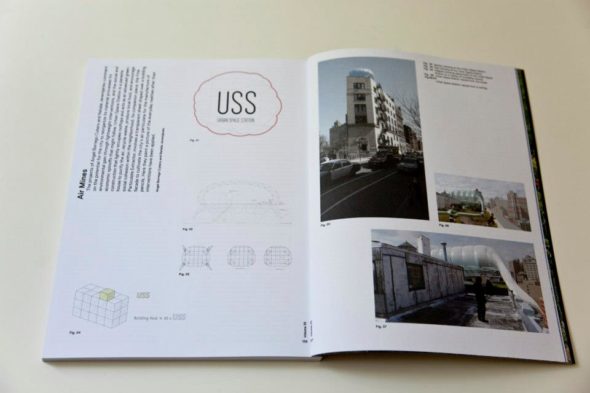 Interior of Volume 35: “Everything under control”
Interior of Volume 35: “Everything under control”
P.V.A.: Shifting to building as metaphor, Irma Boom noted in a 2012 interview that designing a magazine was somehow related to architecture, she called it “building a book”. Do you feel your architectural intelligence has an efficient application in making Volume? I’m thinking of the opening of every article in the “Interiors” issue, describing the space where the author is writing; it generated a particular consciousness of the space the reader is. Or the Spartan design in black and white of Volume 36 “Ways to Be Critical”, which can be seen as an invitation to marginalia, in the same manner that the modern Spartan constructions systems suggested further development. On the other hand, has editorial practice given you a different and useful perspective about architectural field?
A.O.: The “Interiors” issue is a nice example, I think. Yes, that was a conscious attempt to add to the theme in the way we were writing. But also the way the magazine is designed adds to its content. Irma is right; every issue is designed anew, though some elements are fixed. And even these can change (typeface for instance), depending on the theme. Sometimes an idea makes it only to a representational level, like the different papers being used in the “Privatize!” issue. That came from the idea to privatize sections of the issue itself, to do what the Volume sushi box from the early days of Volume was promising and promoting: an issue of Volume is not a set number of pages, but can be anything that fits the box: a portable exhibition (issue 4 “Break Through”), a collection of manifests, a recipe or manual, as long as it fits the container. That experiment had to be stopped because shops were not willing to take such a weird magazine and looking back that formula also ran the risk of becoming overly determined, too much focusing on form as content. With Volume 30: “Privatize!” we kept the idea even though we didn’t fully succeed to section out parts to third parties, because it supported the theme so well.
B.C.: I’m not sure if there’s a relationship between any kind of architectural intelligence we might have and our editorial practice. For each issue we do consider the idea that you can construct a magazine out of many layers of reading – there’s the body text, there’s the lead-ins, the titles, the images. There are certain things we have more control over and things we have less control over. The author’s text is theirs, and should remain theirs. But the lead-ins are written by us, and so we can create some atmosphere there, such as in the case of Volume 33 “Interiors”. We also always try to reserve several pages that we can use as editorial content sprinkled throughout an issue. These pages are an important way of making connections between authors and emphasizing key points, and there is an enormous amount of creativity that goes into their final format and design.
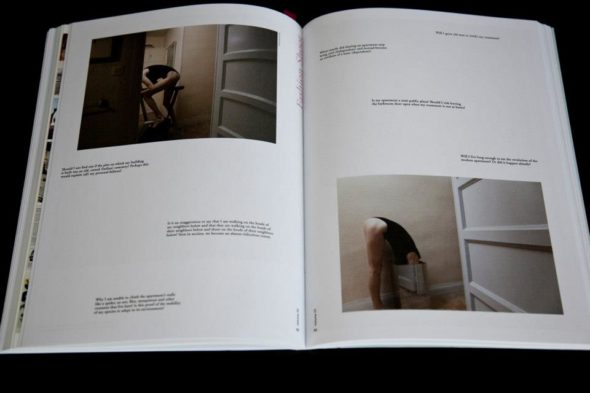 Interior of Volume 33 “Interiors”
Interior of Volume 33 “Interiors”
P.V. A.: I find very interesting how the small pieces that regularly sprinkle our digital screens gain a structural function within the self-contained frame of Volume. The format seems to be tuned in to digital media way of communicating. Take the multi-linear structure based on the assembling of fragments, the introduction of crowd-sourced content previously requested in social networks in the latest issues. It’s a point of encounter with explorations in other creative fields that also deal with narrative, space, time and structure, from literature to filming. Could you tell us more about this route of work in Volume? I also wonder if architectural magazines are the main source of inspiration for you as editors.
B.C.: I think it only makes sense nowadays that print magazines start to reflect some of the dynamism of the digital world. At the same time, print has a special ability to capture the ephemera of the digital and give it a permanent place on a page. I’m glued to my screen every day, with multiple tabs open – the din of social media is always present, and much of what we see on the screen influences the content we solicit and publish. But it’s also interesting to capture some of the more potent ephemera and arrange it on a page. So when Joseph Grima left Domus, we cultivated the tweets expressing disappointment concerning Domus’ decision. Similarly, we took the entire twitter feed of Rachel Armstrong and ran it through the gutter of Volume 35 “Everything Under Control”, because, viewed in isolation, it created this perfect fantastical sci-fi world which was befitting for the issue. We’ve tried directly crowd-sourcing content as well, which is an order of magnitude more difficult, but ultimately rewarding. The selfies of middle fingers pointed at buildings suddenly gained resonance this week with Frank Gehry’s similar gesture.
I can’t speak for Arjen, but I wouldn’t say I take much inspiration from architecture magazines. Certainly there are some I admire, particularly San Rocco and Arch+, but for the most part architecture magazines are incredibly conservative from an editorial perspective. I suppose inspiration comes from all over, but certainly the internet in its infinite weirdness yields quite a few surprises that in some way or another make it onto the page.
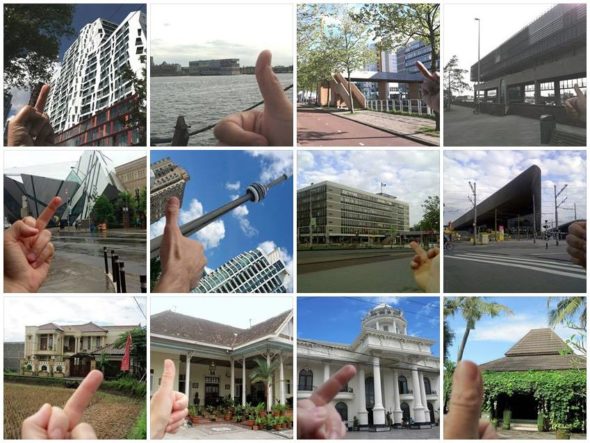 Image that accompanied the call for crowd-sourced content for Volume 36: “Ways to Be Critical”
Image that accompanied the call for crowd-sourced content for Volume 36: “Ways to Be Critical”
P.V.A.: Author Teju Cole has recently developed some interesting experiments playing with the postproduction of crowd-sourced content, like “The Time of the Game” or the short story broadcasted through friend’s tweets and then compiled in his twitter timeline. In my view, works like Cole’s are an indicator that editing can be kind of a new creative work when it gets closer to a form of writing, maybe a form of authorship. Do you think editing could or should be appreciated as such?
A.O.: Oh my, now we’re looking into the abyss of the curatorial position. There’re different aspects here. First: we set the theme, but that doesn’t necessarily mean that authors we invite approach it the same way we do. That creates a tension between idea and content that most of the time is productive, we think. And that has all to do with the first question, the relation between editors and authors. I believe in the benevolent influence of feedback, therefore editing, but I don’t believe in being taken over from an author, which some editors seem to do. In exhibition making the discussion for awhile was on whether the collected works were just illustrations of the curator’s theme and idea, or that they would be presented in their own right. That is a tension authors contributing to Volume will also experience, but we often hear back after the issue’s release that authors are happy and sometimes even proud of being part of that context.
Amsterdam / London / Seville / 2014.
More about Volume here.
Do not miss this article on the making of Volume.
We also recommend Rory’s Hyde’s interview with Arjen Oosterman and Lilet Breddles in the book “Future Practice: Conversation from the Edge of Architecture”, Routledge, 2012.
Questo sito usa Akismet per ridurre lo spam. Scopri come i tuoi dati vengono elaborati.

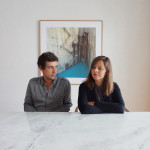
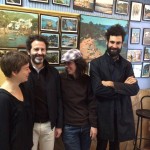
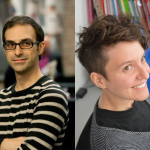




Lascia un commento